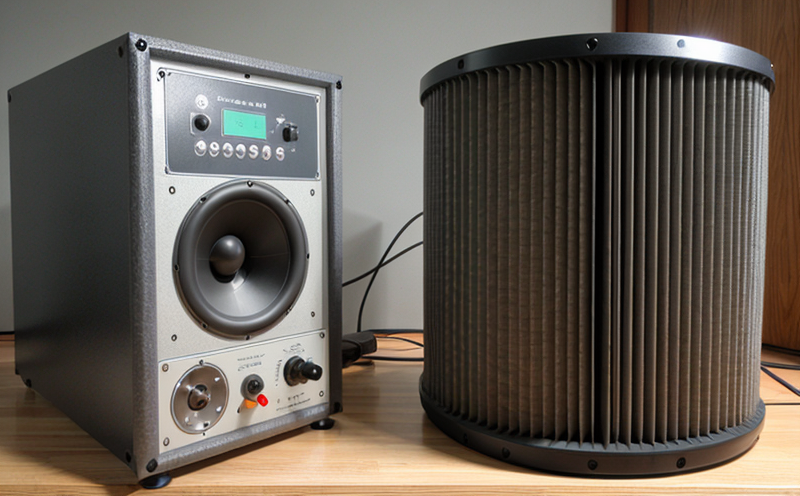ISO 6798 Measurement of Noise from Marine Internal Combustion Engines
The measurement and control of noise in marine environments are critical to ensuring both crew comfort and compliance with international regulations. ISO 6798, specifically part 14, provides a standardized method for measuring the radiated noise from stationary marine internal combustion engines operating at idle speed.
Understanding this standard is essential for quality managers, compliance officers, R&D engineers, and procurement professionals involved in specifying or testing marine equipment. The process involves precise measurement techniques to evaluate sound pressure levels in a controlled environment using an A-weighted octave band analysis over the frequency range of 63 Hz to 8 kHz.
The test setup typically includes a compliant mounting system for the engine, a free-field microphone placed at a standard distance from the exhaust outlet, and appropriate calibration procedures. The resulting data is analyzed according to ISO guidelines to determine compliance with relevant noise limits.
Compliance with this standard ensures that marine engines operate within acceptable noise levels, thereby enhancing crew comfort and potentially reducing operational costs by avoiding penalties or rework due to non-compliance. This testing service supports the broader goal of sustainable maritime operations by addressing environmental concerns related to sound pollution in aquatic ecosystems.
The process begins with a thorough review of the engine specifications and operational parameters, followed by detailed preparation of the test environment. Calibrated equipment is then deployed according to ISO 6798 standards, ensuring accuracy and consistency across multiple tests. Results are meticulously recorded and analyzed using statistical methods to ensure reliability.
Our laboratory adheres strictly to ISO guidelines during all phases of testing, from setup to reporting. This ensures that clients receive accurate and actionable data, which is crucial for informed decision-making regarding equipment selection or modifications. By leveraging this service, marine engineering teams can achieve regulatory compliance while also optimizing their products for user experience.
For those looking into the broader implications of noise measurement in marine environments, it's important to note that ISO 6798 complements other standards aimed at reducing overall environmental impact. This includes considerations such as fuel efficiency and emissions control, which are equally critical components of modern maritime sustainability strategies.
| Parameter | Description |
|---|---|
| Frequency Range | 63 Hz to 8 kHz |
| A-Weighted Sound Pressure Levels | Measurements taken in octave bands |
| Test Duration | 5 minutes at idle speed |
Applied Standards
The ISO 6798 measurement methodology is based on a series of internationally recognized standards that focus on sound level measurements. These include:
- ISO 6352-1:2014 – Acoustics — Measurement of Noise from Stationary Sources — Part 1: General
- ISO 6798-14:2012 – Acoustics — Measurement of Noise from Marine Internal Combustion Engines Operating at Idle Speed
The application of these standards ensures that our testing methodology aligns with international best practices, providing reliable and consistent results.
Scope and Methodology
To ensure accurate measurement according to ISO 6798, we follow a rigorous process that includes:
- Environmental Setup: Ensuring the test area is free from external noise sources.
- Engine Preparation: Performing a thorough inspection and calibration of the engine prior to testing.
- Microphone Placement: Positioning the microphone at the specified distance from the exhaust outlet.
- Data Collection: Gathering sound pressure levels across all relevant frequencies using calibrated equipment.
The collected data is then analyzed to determine compliance with the noise limits stipulated in ISO 6798. This involves statistical processing to ensure accuracy and reliability of results.
Industry Applications
- Regulatory Compliance: Ensuring that marine engines meet international noise regulations.
- R&D & Innovation: Supporting the development of quieter and more efficient marine engines.
- Quality Assurance: Providing data for continuous improvement in manufacturing processes.
- Crew Comfort: Enhancing the working conditions for crew members by reducing noise levels.
- Sustainability Initiatives: Contributing to broader efforts towards quieter and more environmentally friendly marine operations.





